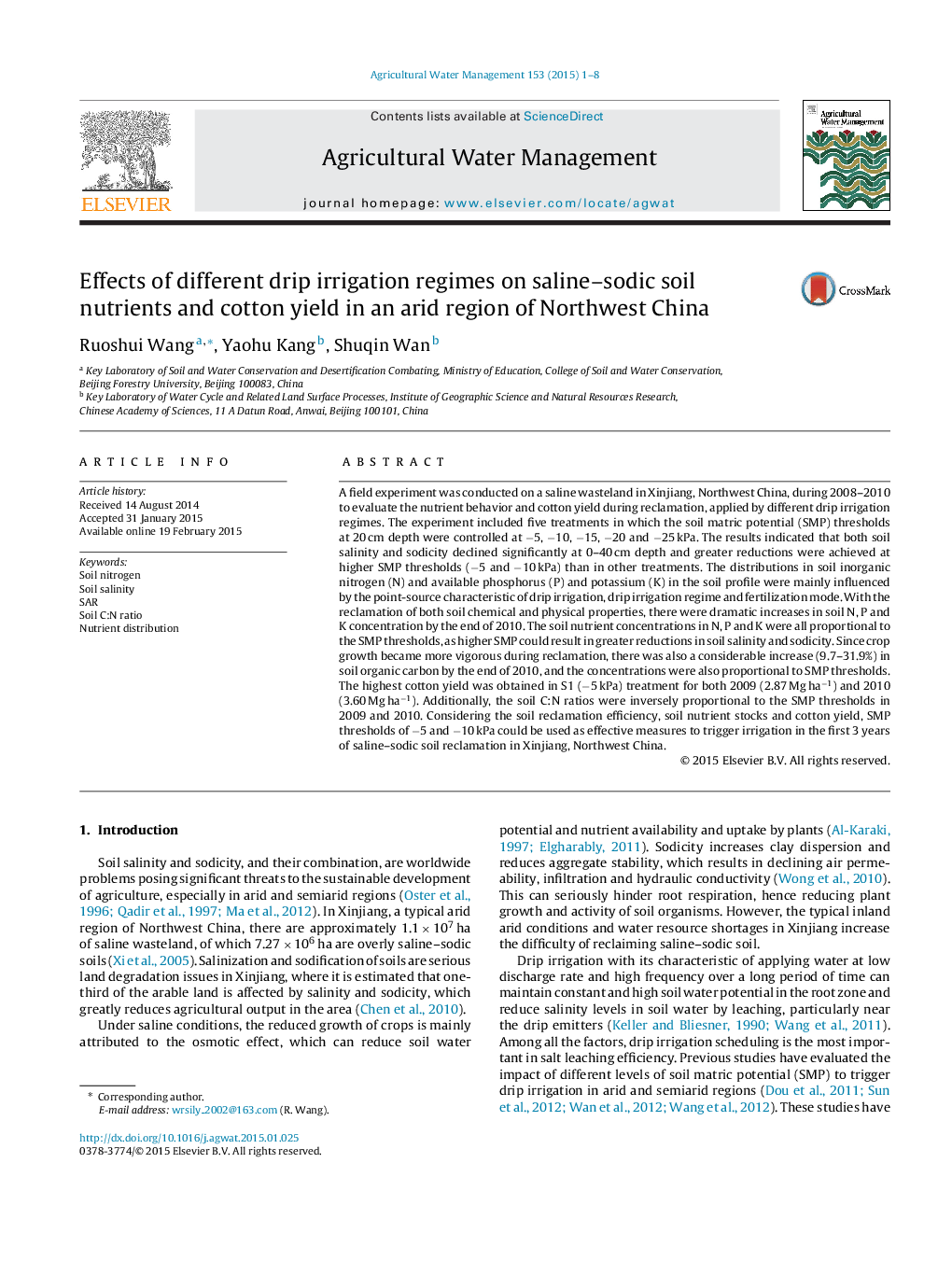| کد مقاله | کد نشریه | سال انتشار | مقاله انگلیسی | نسخه تمام متن |
|---|---|---|---|---|
| 4478448 | 1622926 | 2015 | 8 صفحه PDF | دانلود رایگان |
• The distributions in soil inorganic nitrogen (N) and available phosphorus (P) and potassium (K) in the soil profile were mainly influenced by the point-source characteristics of drip irrigation, drip irrigation regime and fertilization mode.
• With the reclamation of both soil chemical and physical properties, there were dramatic increases in soil N, P and K concentration by the end of 2010.
• There was also a considerable increase (9.7–31.9%) in soil organ carbon by the end of 2010, and the concentrations were also proportional to the soil matric potential thresholds.
• The soil C:N ratios were inversely proportional to the SMP thresholds in 2009 and 2010.
A field experiment was conducted on a saline wasteland in Xinjiang, Northwest China, during 2008–2010 to evaluate the nutrient behavior and cotton yield during reclamation, applied by different drip irrigation regimes. The experiment included five treatments in which the soil matric potential (SMP) thresholds at 20 cm depth were controlled at −5, −10, −15, −20 and −25 kPa. The results indicated that both soil salinity and sodicity declined significantly at 0–40 cm depth and greater reductions were achieved at higher SMP thresholds (−5 and −10 kPa) than in other treatments. The distributions in soil inorganic nitrogen (N) and available phosphorus (P) and potassium (K) in the soil profile were mainly influenced by the point-source characteristic of drip irrigation, drip irrigation regime and fertilization mode. With the reclamation of both soil chemical and physical properties, there were dramatic increases in soil N, P and K concentration by the end of 2010. The soil nutrient concentrations in N, P and K were all proportional to the SMP thresholds, as higher SMP could result in greater reductions in soil salinity and sodicity. Since crop growth became more vigorous during reclamation, there was also a considerable increase (9.7–31.9%) in soil organic carbon by the end of 2010, and the concentrations were also proportional to SMP thresholds. The highest cotton yield was obtained in S1 (−5 kPa) treatment for both 2009 (2.87 Mg ha−1) and 2010 (3.60 Mg ha−1). Additionally, the soil C:N ratios were inversely proportional to the SMP thresholds in 2009 and 2010. Considering the soil reclamation efficiency, soil nutrient stocks and cotton yield, SMP thresholds of −5 and −10 kPa could be used as effective measures to trigger irrigation in the first 3 years of saline–sodic soil reclamation in Xinjiang, Northwest China.
Journal: Agricultural Water Management - Volume 153, 1 May 2015, Pages 1–8
